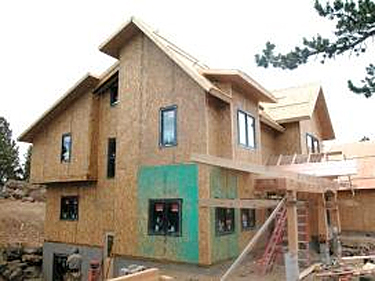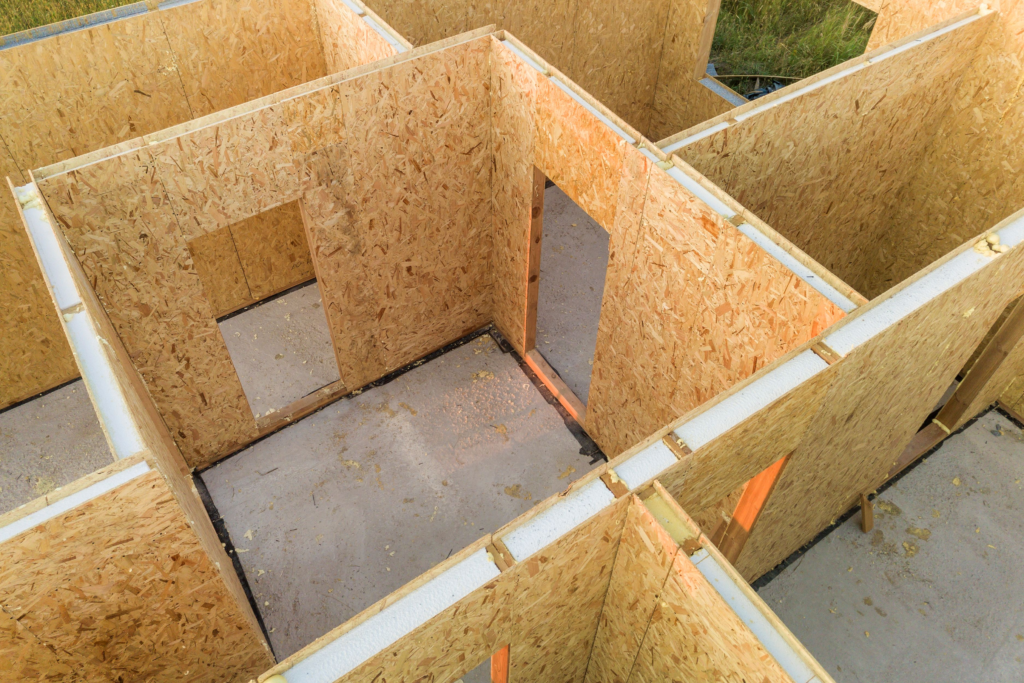Experienced & Efficient SIP Panel Construction
Expert SIP Panel Builders
At SIP Panel Houses, we are committed to delivering excellence in every aspect of construction.
Our team of skilled professional SIP Panel Builders bring together expertise, precision, and dedication to ensure that your building project exceeds expectations.
With SIPs panels as our building material of choice, we offer a streamlined and efficient construction process that saves time, reduces costs, and enhances the overall quality of the structure.


When you choose our SIPs panel building service, you can expect a hassle-free experience from start to finish.
Our experienced architects and builders work closely with you to understand your vision and translate it into a beautifully crafted space.
Whether you’re planning a residential, commercial, or industrial project, SIPS panels provide unparalleled insulation and energy efficiency, resulting in long-term cost savings and a comfortable indoor environment.
With our meticulous attention to detail, cutting-edge technology, and commitment to customer satisfaction, we take pride in delivering exceptional buildings that are not only aesthetically pleasing but also durable and sustainable.
Trust us to bring your dream project to life and experience the benefits of SIPs panel construction firsthand.
SIP Panel Builders - Streamlining SIP Panel Construction
In recent years, the construction industry has seen a surge in the use of Structural Insulated Panels (SIPs) as an innovative and efficient building method. SIP panel construction offers numerous advantages, including improved energy efficiency, faster assembly, and reduced waste. Please see below where we will delve into the process of SIP panel construction, providing insights into its components, manufacturing, and on-site assembly.
- Understanding SIP Panels
SIPs are prefabricated building components made from a core material, usually Expanded Polystyrene (EPS) foam or Polyurethane (PUR), sandwiched between two structural panels, often oriented strand board (OSB). This composition creates a strong, lightweight, and well-insulated building element.
- Design and Planning
The first step in the SIP panel construction process is the design and planning phase. Architects and engineers work closely to create detailed drawings and specifications that outline the exact dimensions and panel configurations required for the project. These designs are then sent to manufacturers for production.
- SIP Panel Manufacturing
The manufacturing of SIP panels takes place in controlled factory environments, ensuring consistent quality and precision. The process begins with the cutting of OSB panels to the specified dimensions. Next, the EPS foam or PUR core is precisely measured and inserted between the OSB sheets. The panels are then bonded together using strong adhesives and sometimes additional fasteners to provide structural integrity. Openings for doors, windows, and utilities are sometimes pre-cut during this stage.
- Transportation to the Construction Site
Once the SIP panels are manufactured, they are loaded onto trucks and transported to the construction site. Due to their lightweight nature, larger panels can be easily transported, reducing delivery costs and environmental impact.
- On-Site Assembly
SIP panel construction significantly expedites the building process compared to traditional methods. On-site assembly involves erecting the pre-fabricated panels, which are often designed to interlock or fit together like puzzle pieces. This streamlined process requires fewer labor hours and allows for quicker weather-tight enclosures, mitigating the risk of weather-related damage during construction.
- Electrical and Plumbing Installation
After the SIP panels are erected, electrical and plumbing systems are installed. Channels and voids are pre-designed within the panels to accommodate wiring and piping, reducing the need for extensive on-site modifications.
- Exterior and Interior Finishes
With the structural elements in place, the exterior and interior finishes can be applied. These finishes can range from traditional materials like render, timber cladding, or brick on the exterior, to drywall, paint, and flooring on the interior. SIP panel construction does not limit the variety of finishes available, offering a range of aesthetic options to suit any architectural style.
Conclusion
SIP panel construction has emerged as a transformative building method, revolutionising the construction industry with its efficiency and sustainability. The process of SIP panel construction, from design and manufacturing to on-site assembly, offers a multitude of benefits, including reduced construction time, improved energy efficiency, and enhanced structural integrity. As the world moves towards more sustainable and eco-friendly practices, SIP panel construction is sure to play an integral role in shaping the future of modern construction.
